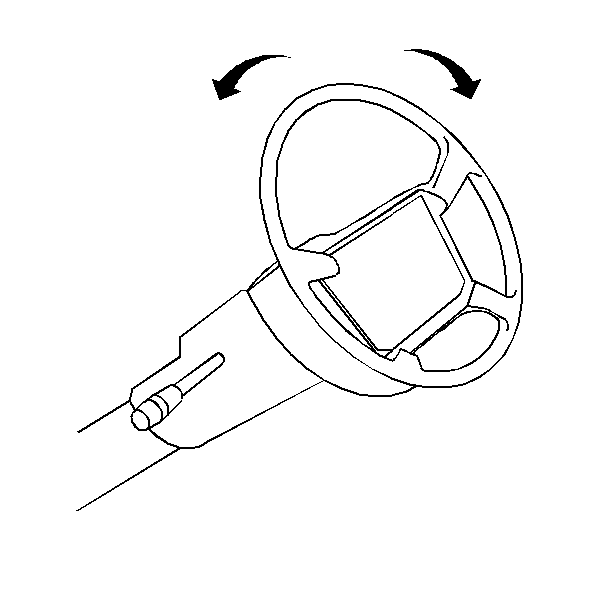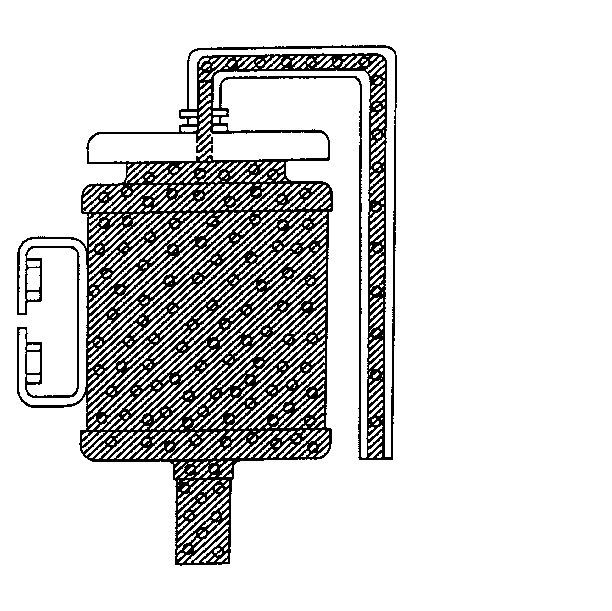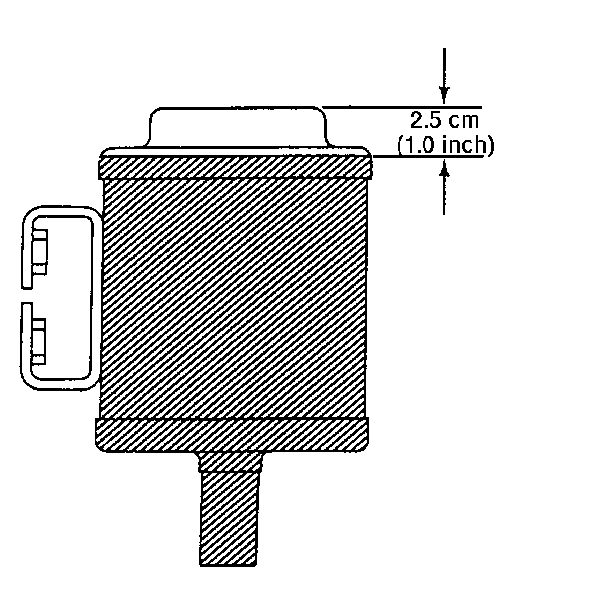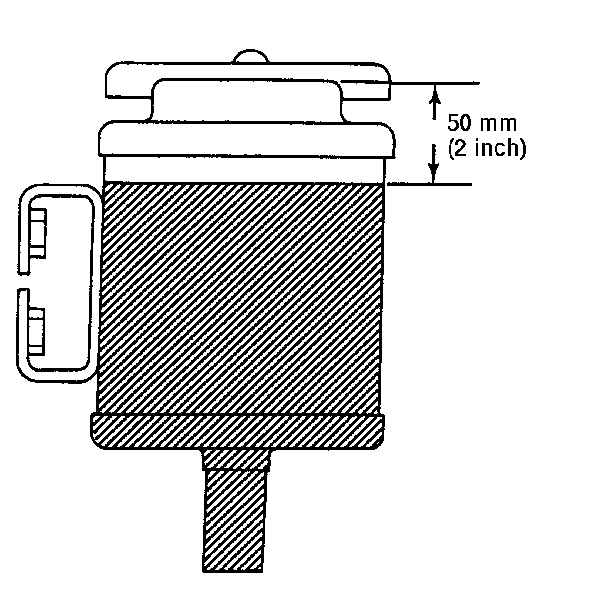- When a power steering pump has been installed or an oil line has been connected, air must be bled from the system before the vehicle is operated. If the air is allowed to remain in the power steering fluid, the steering system will be noisy and operate unsatisfactorily. Bleed air from the hydraulic system as described below.
- Fill the reservoir to within 13 mm (½ in) of the top with GM Power Steering Fluid, or the equivalent. Leave off the cap.
- Starting at the pump, squeeze the hose and work up to the reservoir in order to remove trapped air.
- After squeezing out the trapped air, fill the reservoir with new, clean power steering fluid.
- Have an assistant ready to pour power steering fluid into the reservoir the moment the engine starts in order to prevent the entry of air into the system.
- Start the engine. Pour in the fluid and allow the engine to run for approximately three seconds. Shut off the engine.
- Wait one minute and fill the reservoir again.
- Repeat steps 5, 6 and 7 two more times.
- Start the engine again. The fluid level must be maintained at the bottom of the reservoir in order to prevent pump aeration throughout the remainder of the procedure.
- On the P72 chassis, pump the brake pedal at least three times in order to eliminate air from the hydraulic brake booster.
- With the engine at idle speed, slowly turn the steering wheel to the right until the right wheel stop is lightly contacted. Turn the steering wheel to the left one-half turn and then again to the right, lightly against the wheel stop. Repeat this five times.
- With the engine at idle speed, slowly turn the steering wheel to the left until the left wheel stop is lightly contacted. Turn the steering wheel to the right one-half turn and then again to the left, lightly against the wheel stop. Repeat this five times.
- Maintain the oil level in the reservoir just above the bottom of the reservoir.
- Turn the steering wheel to the center position and let the engine idle for a few seconds while installing the fabricated cap. Place the end of the hose in a suitable container. Turn off the engine for at least one minute in order to allow the air to bubble out through the fabricated overflow cap.
- Remove the overflow cap. Start the engine and add oil as necessary in order to maintain an oil level just above the bottom of the reservoir.
- Repeat the procedures listed in steps 5 through 15 as many times as necessary until there is no more than a 2.5 cm (1 in) rise in the reservoir fluid level when the engine is stopped.
- Start the engine and center the steering wheel by turning from one wheel stop to the opposite wheel stop while counting the number of turns. Turn the steering wheel half the number of turns back to the center.
- Shut off the engine.
- Install the steering tie rod. Refer to Tie Rod Replacement in Steering Linkage.
- Start the engine and let it idle at 1500 rpm. Turn the wheels right and left lightly against the wheel stops. Continue this for two minutes. This should eliminate any air that is left in the system.
- Shut off the engine. check for leaks and fill the reservoir to its final fill level of 50 mm (2 in) from the top.

When bleeding the system, and any time fluid is added to the power steering system, use only the recommended power steering fluid.
Before bleeding the system, all the hose clamps, the line connectors and the fittings must be tight enough to prevent fluid leaks or the entry of air into the system. There must be enough power steering fluid to maintain the proper fluid levels in the reservoir at all times during the bleeding procedure.
This procedure is designed to minimize the chance of fluid aeration or overflow during the bleeding process.
Do not install the vehicle reservoir cap during the bleeding procedure. Air may be trapped in the system and when the engine is stopped, the power steering fluid will be forced out of the breather hole in the cap. An overflow cap can be fabricated from a reservoir cap. Refer to Fabricated Reservoir Cap.
Remove the steering tie rod at the pitman arm. Refer to Tie Rod Replacement in Steering Linkage.

Notice: Do not hold the steering wheel against the stop. This may damage the pump.





CAUTION:: Do not overfill the reservoir when adding fluid. The fluid will expand when hot. Overfilling could result in the spillage of fluid from the reservoir. Fluid that gets on hot engine parts could possibly cause a fire and result in serious personal injury.

